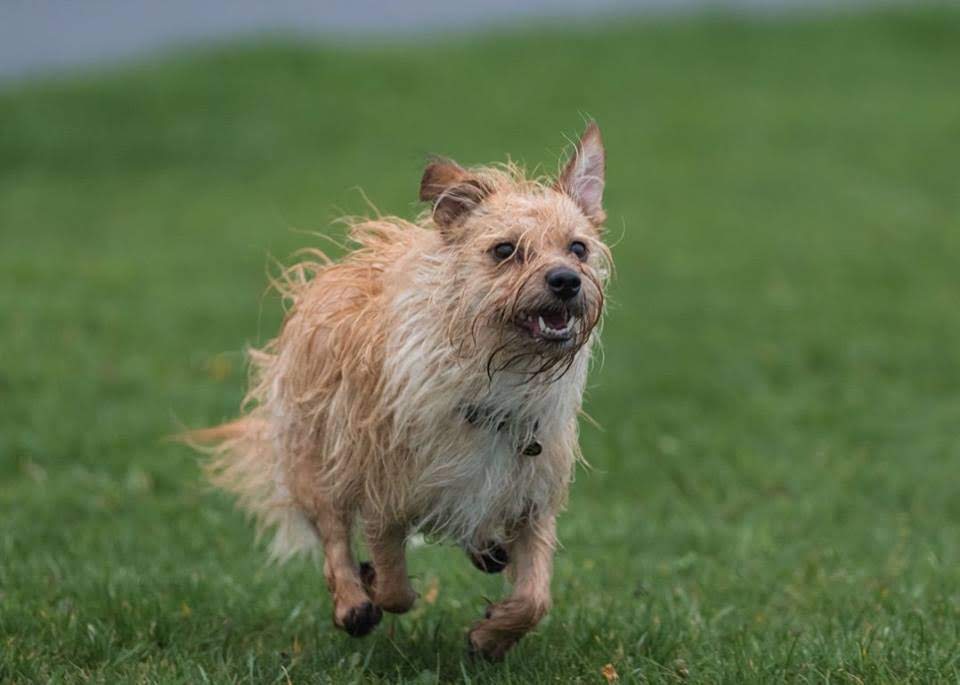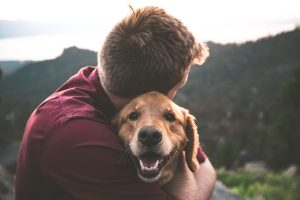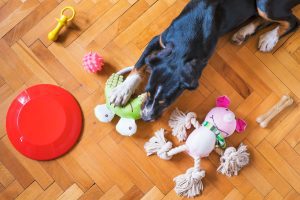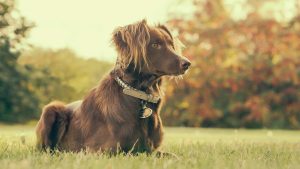Need help with Reactive Dog Behaviour? Join my FREE Facebook support group...
Clicker training your dog
There are tons of benefits to be gained from clicker training your dog, in fact, I recommend it to nearly half of my private behaviour clients!
If you’ve never heard of it before, a clicker is a small plastic box that makes a clicking noise when you press on the button. Once you’ve spent time teaching your dog to associate the noise with a yummy reward it can become a valuable tool in your dogs training.
When you introduce the clicker to your dog you are basically transferring the good feeling he gets from his food treat onto the clicker. You’ll then use the clicker to transfer that good feeling onto something else. If you want them to feel good about something they are doing, then give them a click!
Pavlov’s dogs
In the 1890’s Ivan Pavlov noticed that his lab dogs salivated when they heard the footsteps of his assistant who was bringing the dogs their food. This interested Pavlov, and he discovered that any object or event that the dogs associated with food could trigger the same response. It sounds obvious now, but this was an important discovery . So important, that he devoted the rest of his career to studying this type of learning.
Famously, Pavlov tested his theory with a bell and a metronome and soon found that any object or sound could make the dogs salivate. Today we have used this idea to enhance our dogs training with a clicker.
The benefits of clicker training
The first, and possibly most important benefit, is that it doesn’t interrupt the behaviour you are working towards. If you’ve spent ages trying to calm your dog and they have finally laid down in their bed, the last thing you want to do is to get a treat out. They’ll be straight out of their bed to get their treat, and you’ll have to start all over again. The same happens with lots of different behaviours. The clicker allows you to let your dog know they are doing well and that they’ll get their treat later!
You can use clicker training to help with rehabilitation as well as teaching new tricks and behaviours. I love using it for behavioural work because it’s so good for boosting confidence. The delay between the click and the reward creates anticipation, which leads to a feeling of happiness, which is great for boosting self esteem.

It is also perfect for dogs that refuse treats in certain circumstances. Anxious dogs regularly refuse well loved treats, as do reactive dogs. In these situations you can use your clicker to let them know they’ve done a great job. Then once the situation has passed, and they are ready for their reward, you can be ready with their treat.
If you’re working on keeping your dog in the learning zone, it is brilliant for getting you closer to a trigger before a behaviour escalates into the Out of Control zone. With practise, it can also prevent the behaviour escalating at all.
It’s precise
Clicker training your dog will speed up your training as it is a more precise way to mark the correct behaviour. And the clearer it is to your dog that they’ve done the right thing, the quicker they’ll learn.
Any good behaviour can be rewarded and encouraged using your clicker, and it’s perfect for distance work and behaviours you don’t want to stop. Saying “good boy” and offering a treat translates into “I’m done.” The clicker encourages the good behaviour to continue, such as in loose lead walking or recall. You just keep on clicking.
Introducing your clicker
Clicker training your dog starts with a big pile of small, but tasty, treats and a clicker. Simply, hold a treat in your hand. Get your clicker ready. And, as your dog takes the treat, press the button. The click and treat must come as close together as possible, ideally they’ll happen at exactly the same time. The longer the gap between the food and click, the less effective it will be.
It’ll take quite a few repetitions before the association is made, so keep going until you’ve built up about an hours worth of repetitions. Don’t do this in one go though, you’ll end up with a pretty sick dog! Five minutes at a time should do it. If you spread this over a week or two, the association will be strong in no time. Once you have finished with this step, you can stop with these sessions, and put it into practise.
Teaching a new trick
The clicker is perfect for teaching new tricks. You’ll need a clicker and a treat for most tricks. You use your treat to lure your dog into the position you are hoping to teach. For example, if you want your dog to sit, hold the treat above your dogs nose and move it slowly backwards towards their tail. They’ll follow the treat with their nose which will tip them into a sit position. As soon as they are in position press the click, then offer them the treat after.
For loose lead walking, start clicking as soon as the lead goes loose and keep clicking as long as it stays loose. Every now and then you can stop and offer a few treats as paycheck for all the banked clicks.
As they get better, you’ll not need the treat. Then, you’ll be able to teach them to do their tricks at a distance away from you.
Encouraging a new behaviour
Using your clicker to encourage a new behaviour first requires you to make the problem easier for your dog to cope with. I talk about different ways to do this in my reactive dog behaviour blog, but essentially it’s about moving further away, or making the trigger quieter, or less threatening.
If your dog is reactive to other dogs, they will cope better if they are further away. So, start at a distance and begin to approach the other dog. If they remain under control just keep clicking and approaching. As you get too close, they’ll become overwhelmed and lose control. Just stop moving and stop clicking, wait for them to calm down, and then once they are back under control again you can carry on from where you left off. The clicker will get you closer and closer to the other dog over time and repetition, until one day you’ll just walk right by. Once the dog has passed, you can offer them their well earned treats.
How can I help you with your dogs behaviour?
Private Dog Behaviour Consultations are currently available in the Dundee area and beyond, or via zoom. If you are looking for help solving your dogs behaviour and training problems, then please get in touch!


